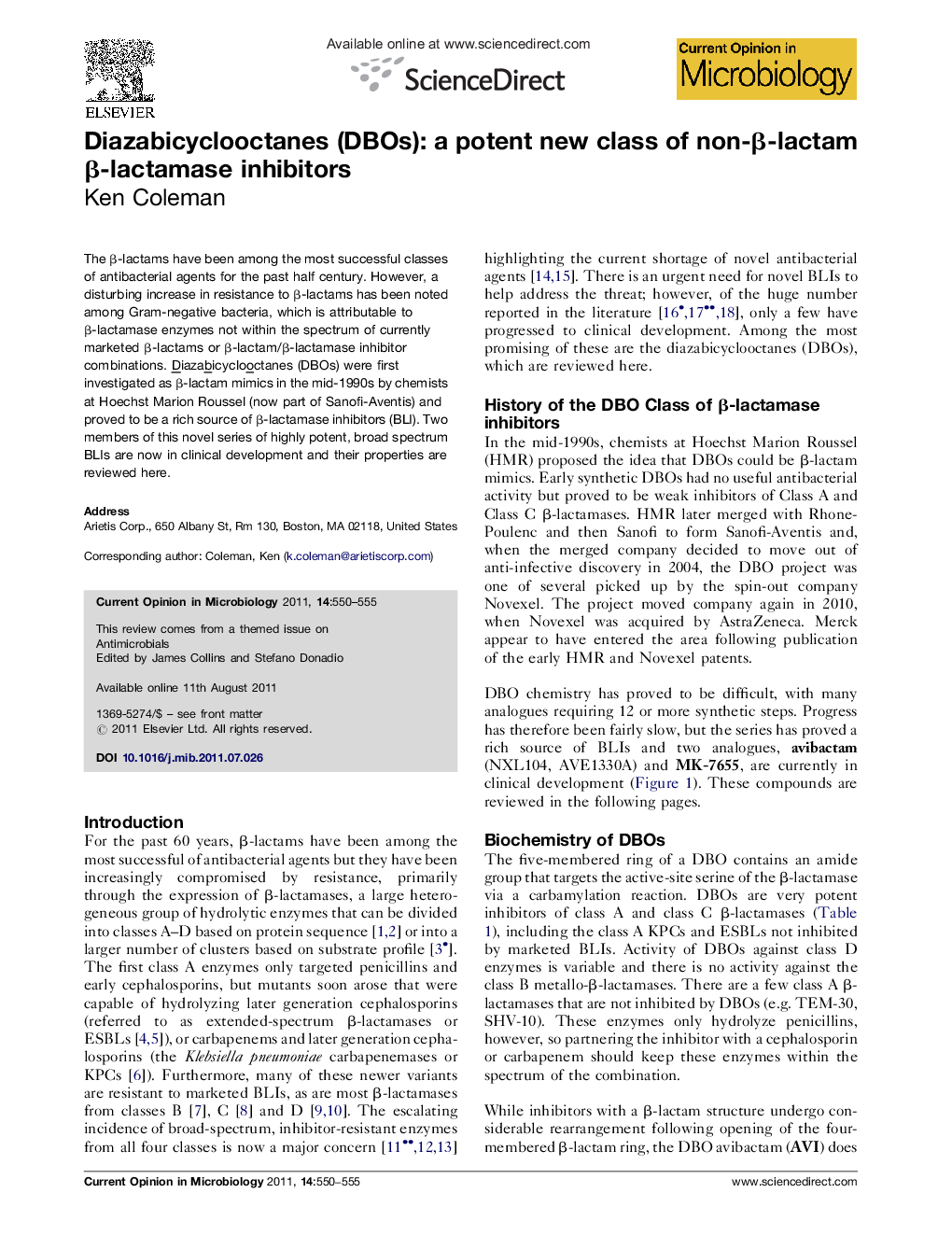| Article ID | Journal | Published Year | Pages | File Type |
|---|---|---|---|---|
| 3399209 | Current Opinion in Microbiology | 2011 | 6 Pages |
The β-lactams have been among the most successful classes of antibacterial agents for the past half century. However, a disturbing increase in resistance to β-lactams has been noted among Gram-negative bacteria, which is attributable to β-lactamase enzymes not within the spectrum of currently marketed β-lactams or β-lactam/β-lactamase inhibitor combinations. Diazabicyclooctanes (DBOs) were first investigated as β-lactam mimics in the mid-1990s by chemists at Hoechst Marion Roussel (now part of Sanofi-Aventis) and proved to be a rich source of β-lactamase inhibitors (BLI). Two members of this novel series of highly potent, broad spectrum BLIs are now in clinical development and their properties are reviewed here.
► Diazabicyclooctanes (DBO) are a novel class with a β-lactam-like mode of action. ► The first DBOs to reach clinical development are β-lactamase inhibitors. ► DBO β-lactamase inhibitors inhibit class A and class C β-lactamases and are more potent than current commercial inhibitors. ► DBOs with an additional ring (DTOs?) have antibacterial activity.
